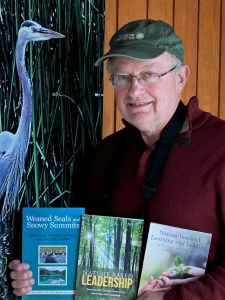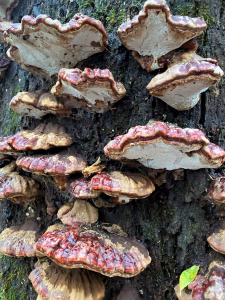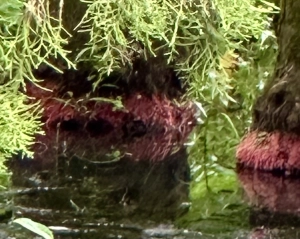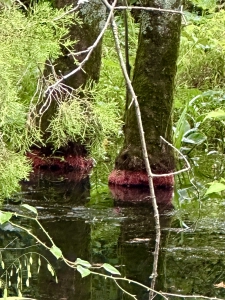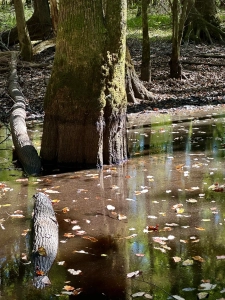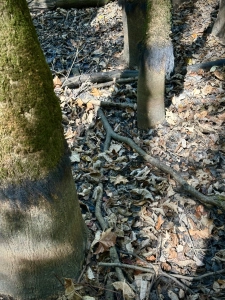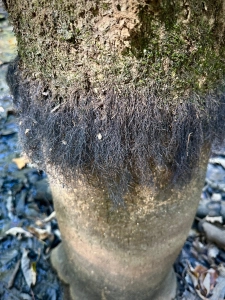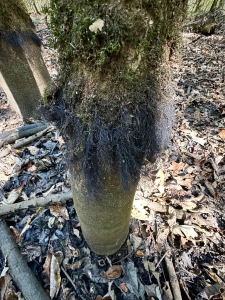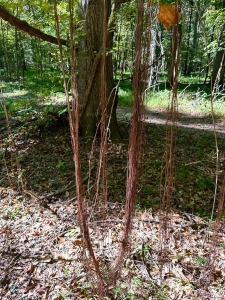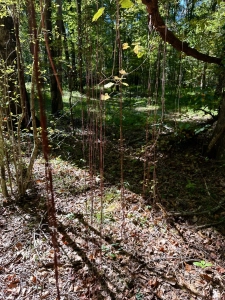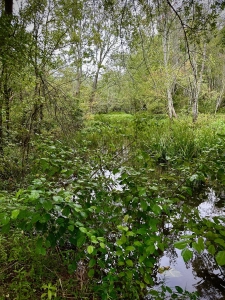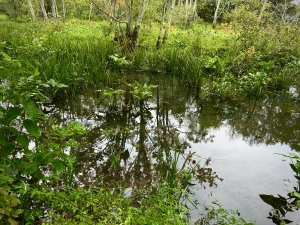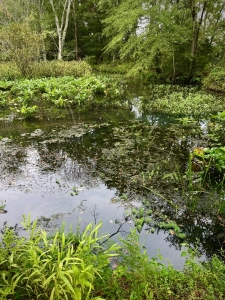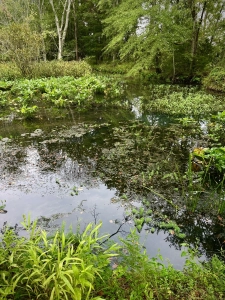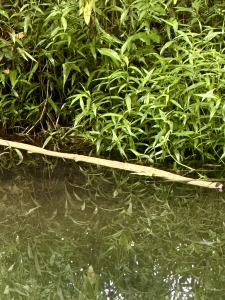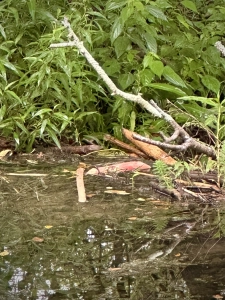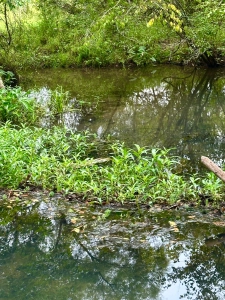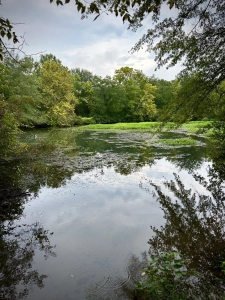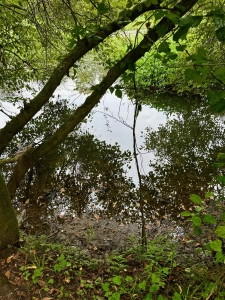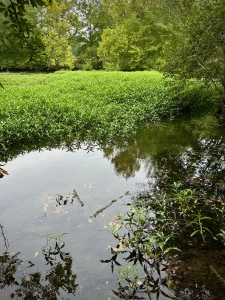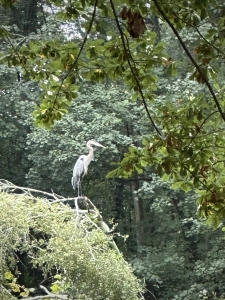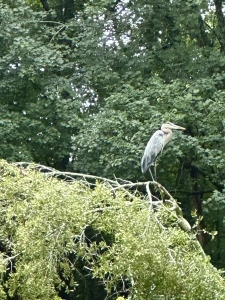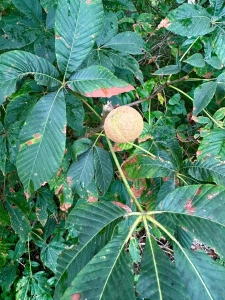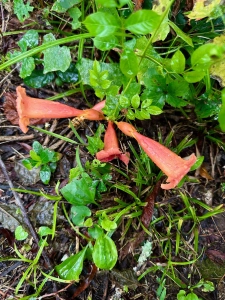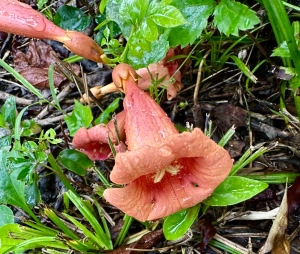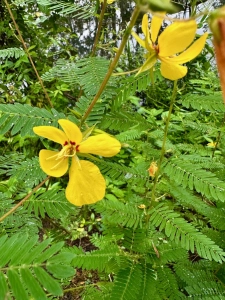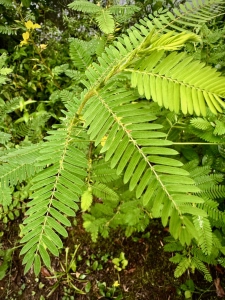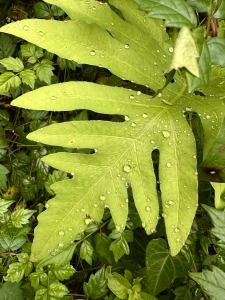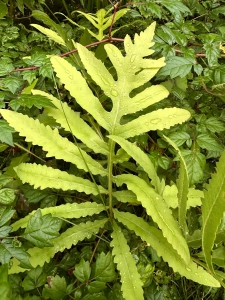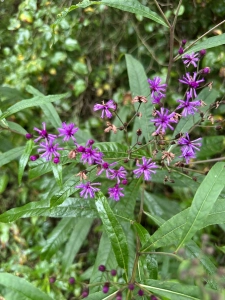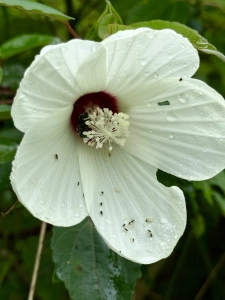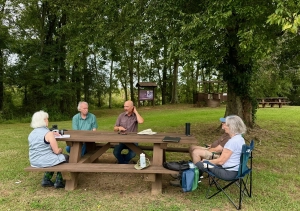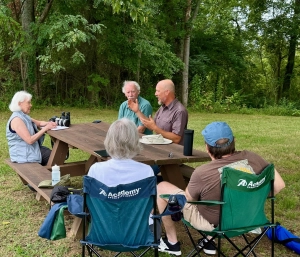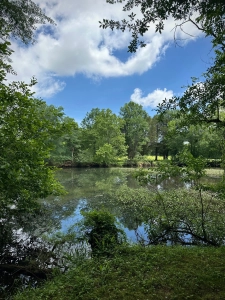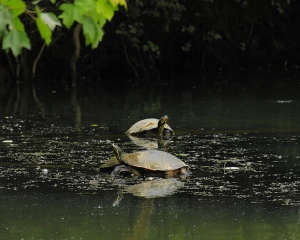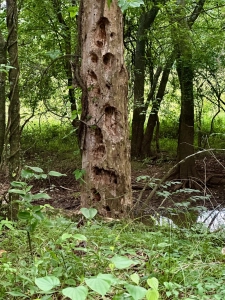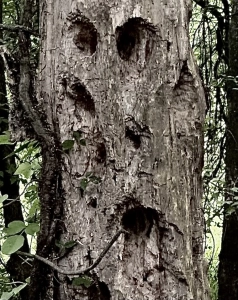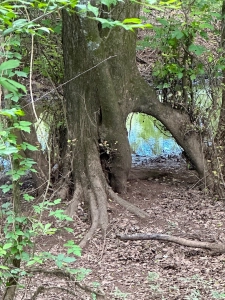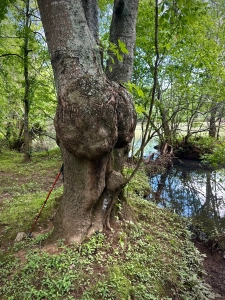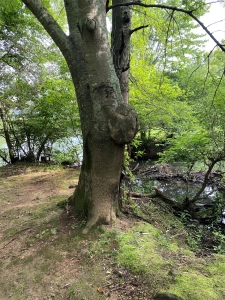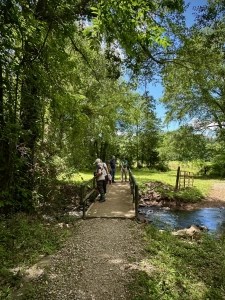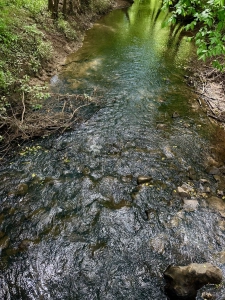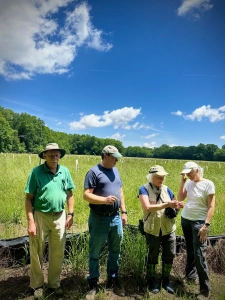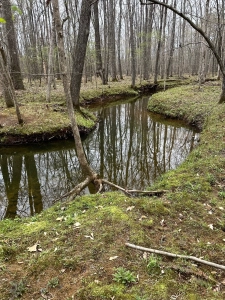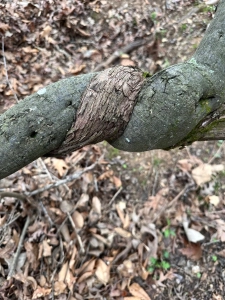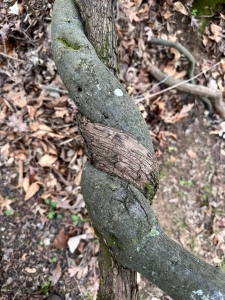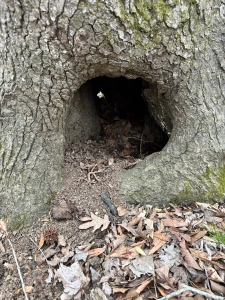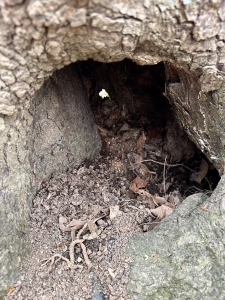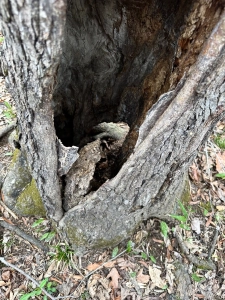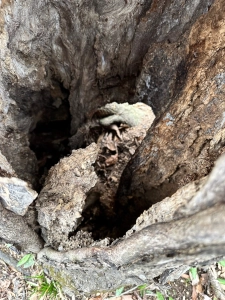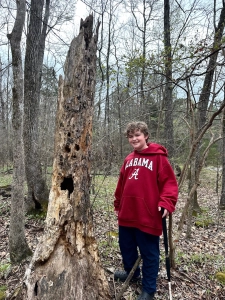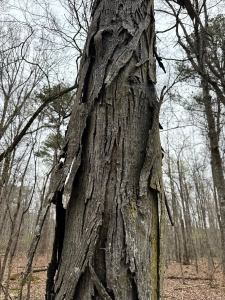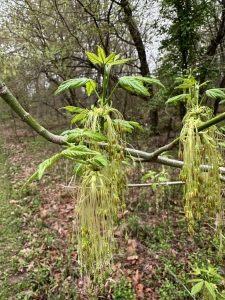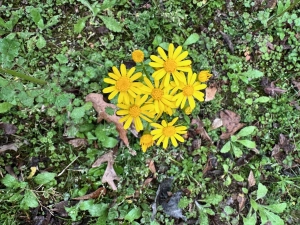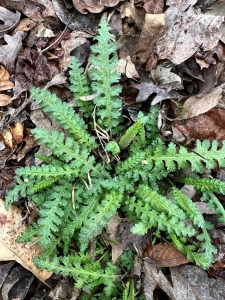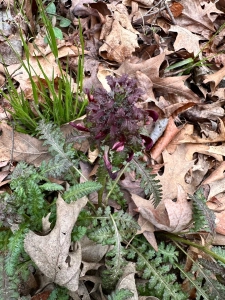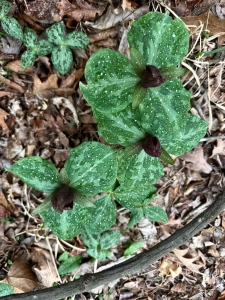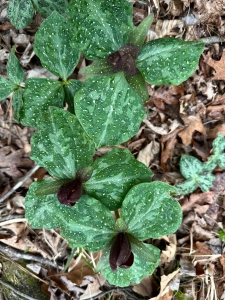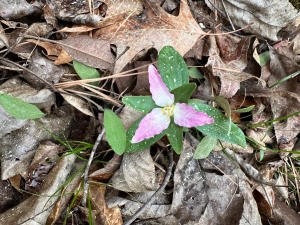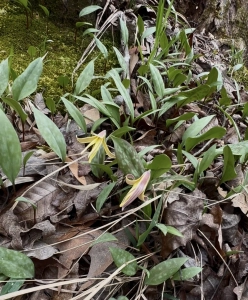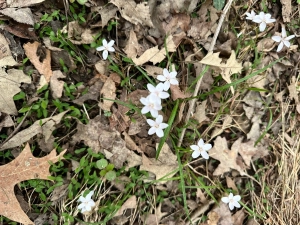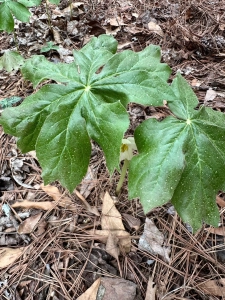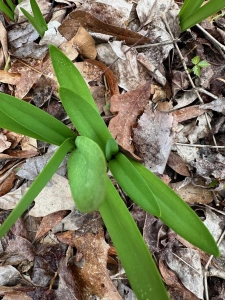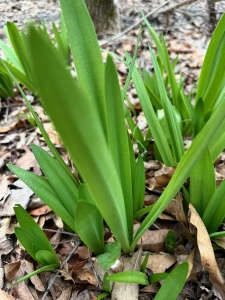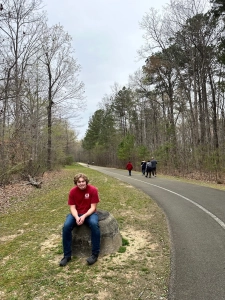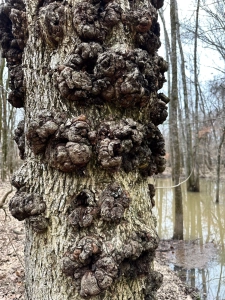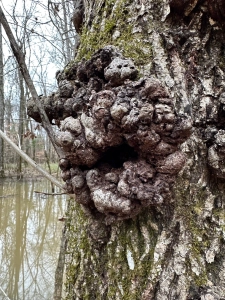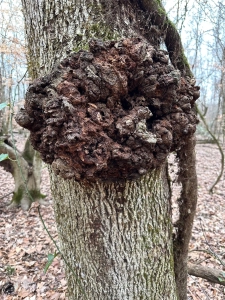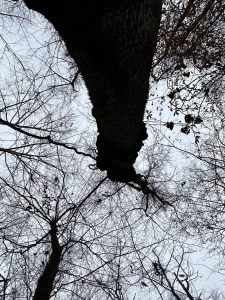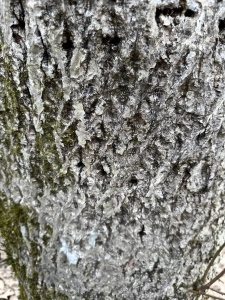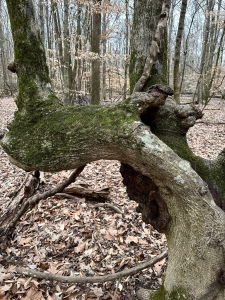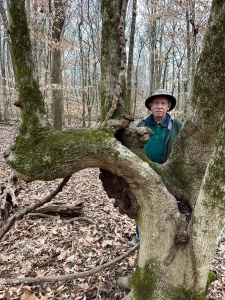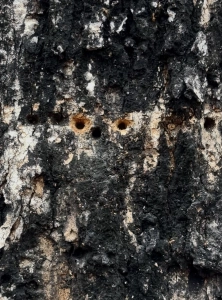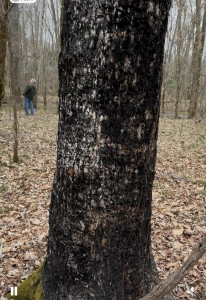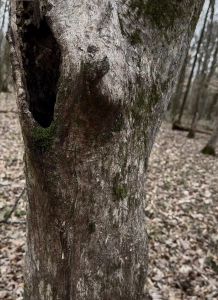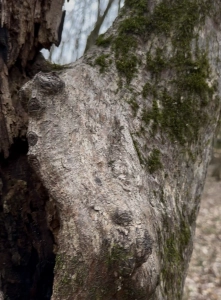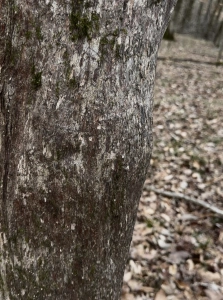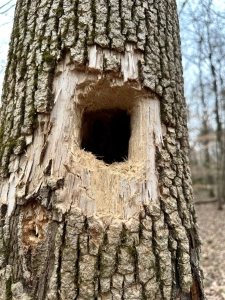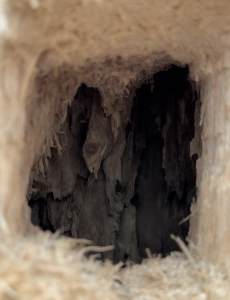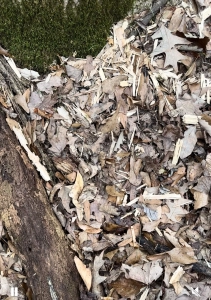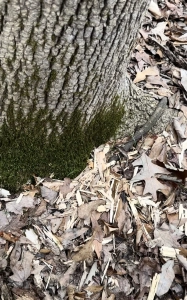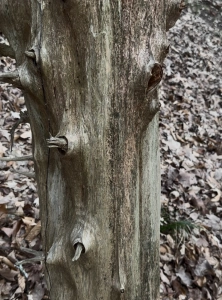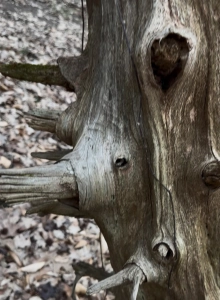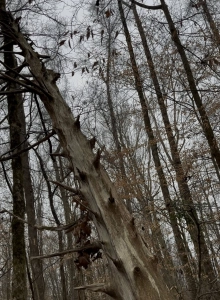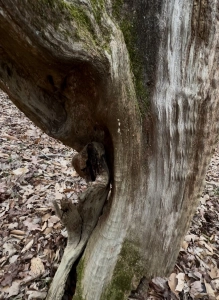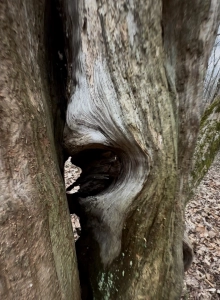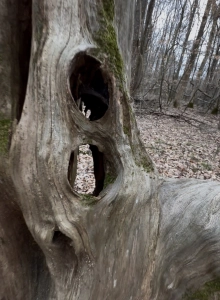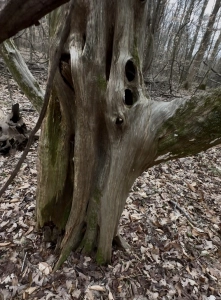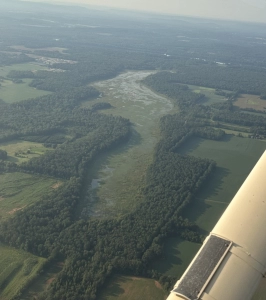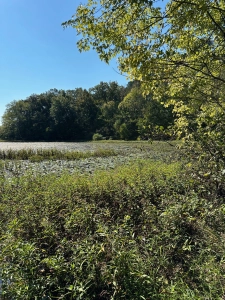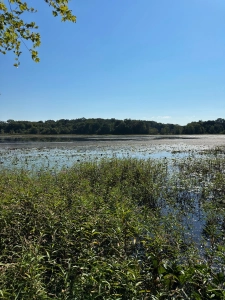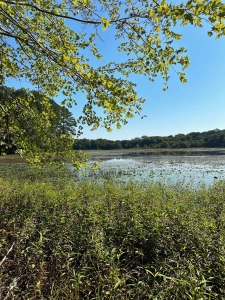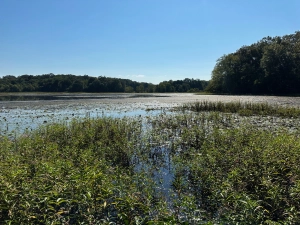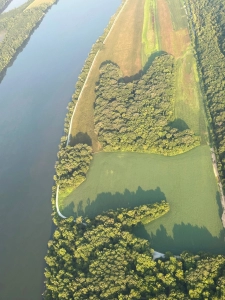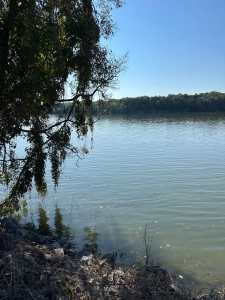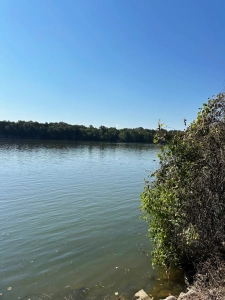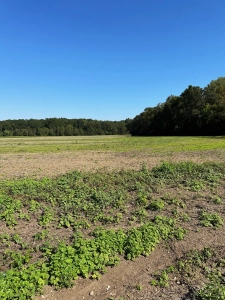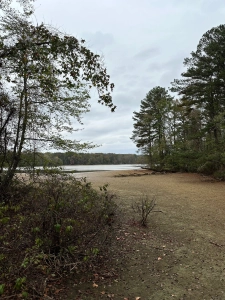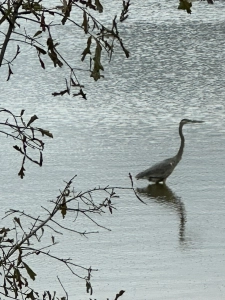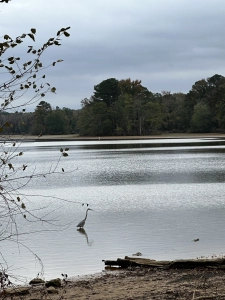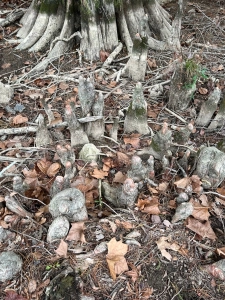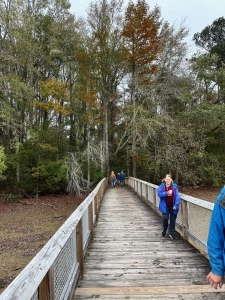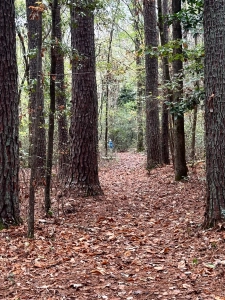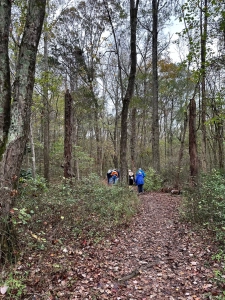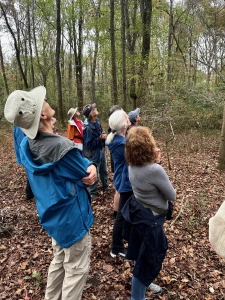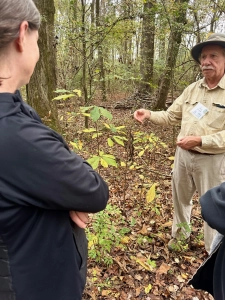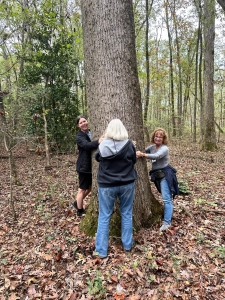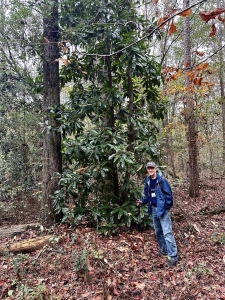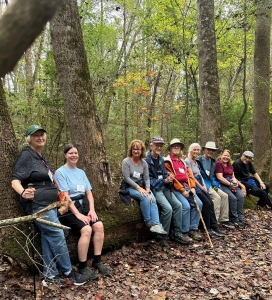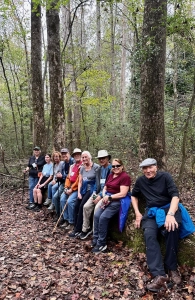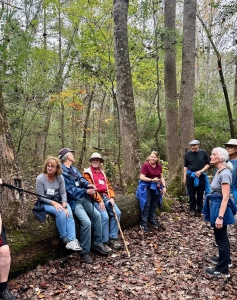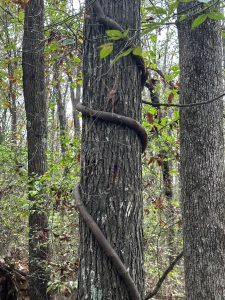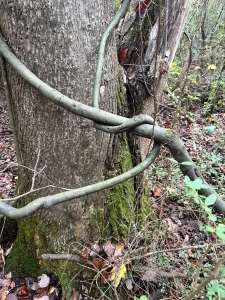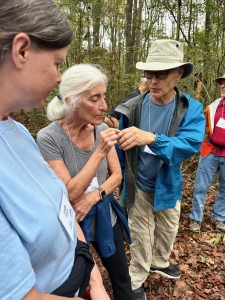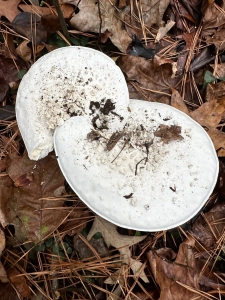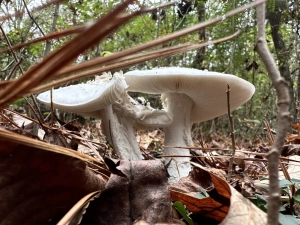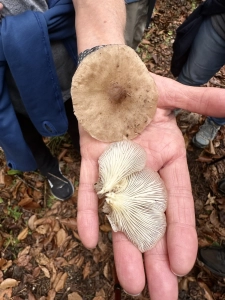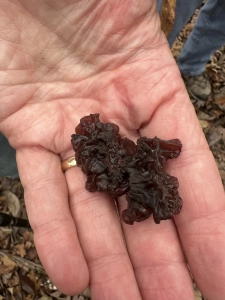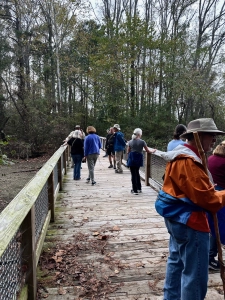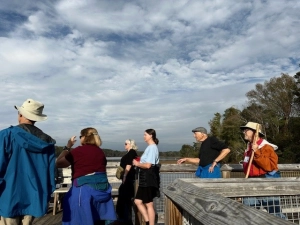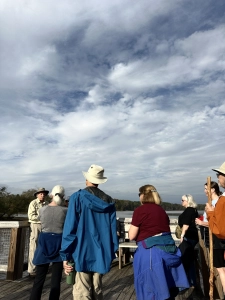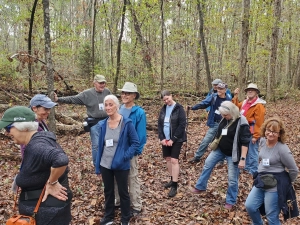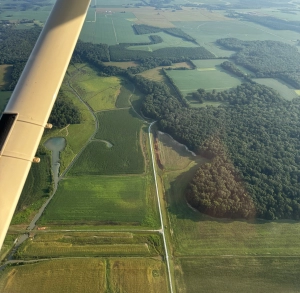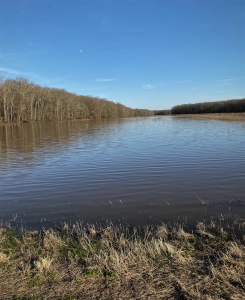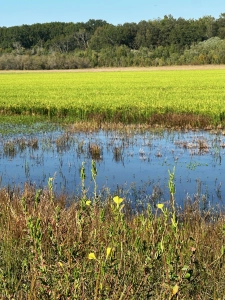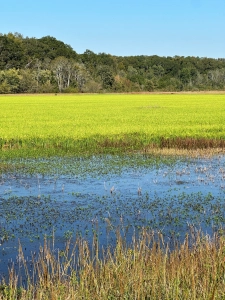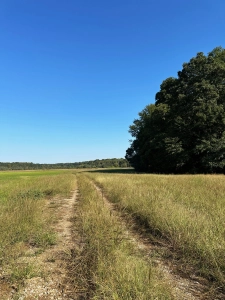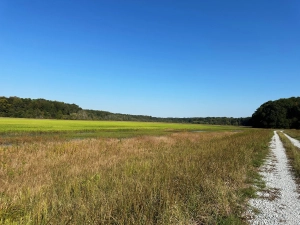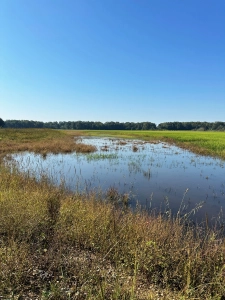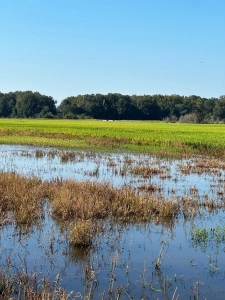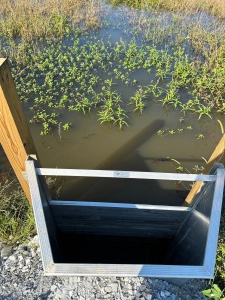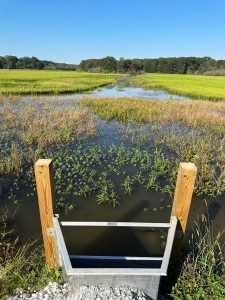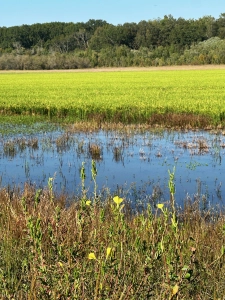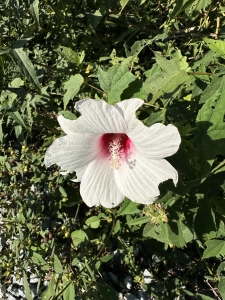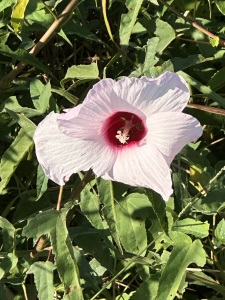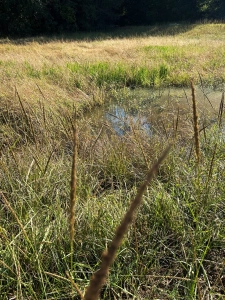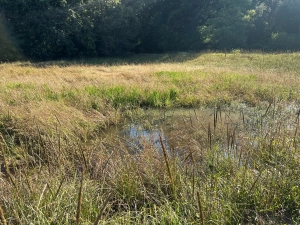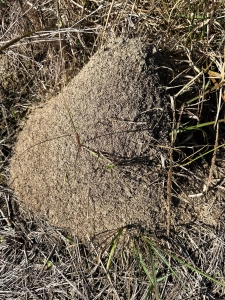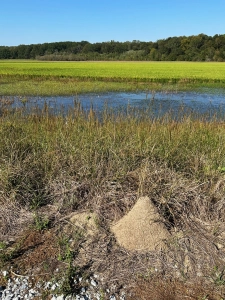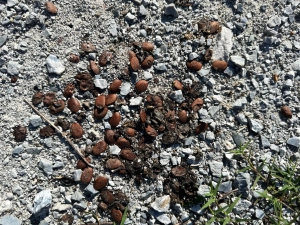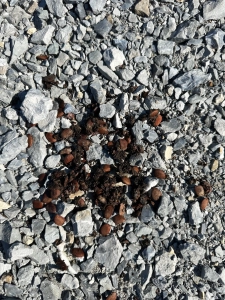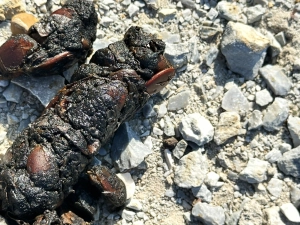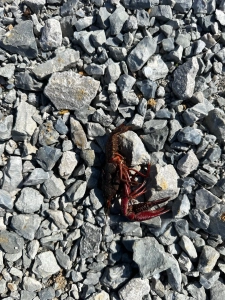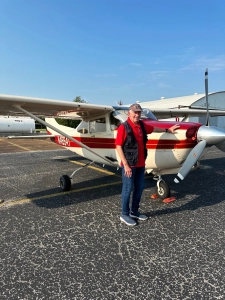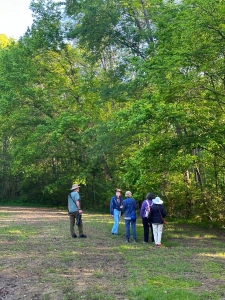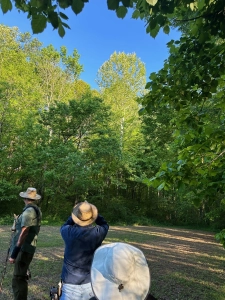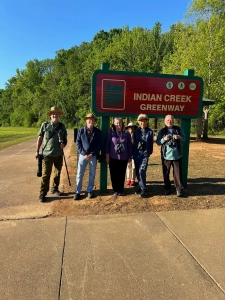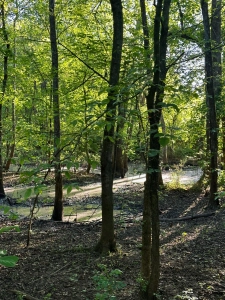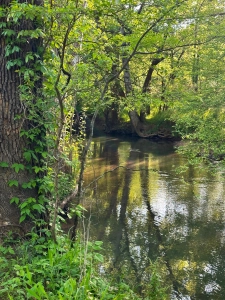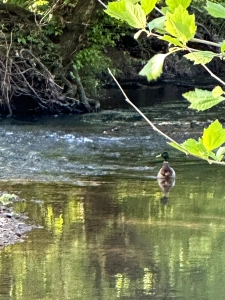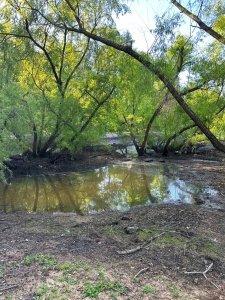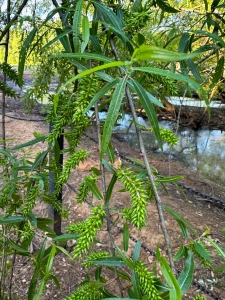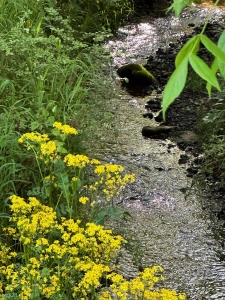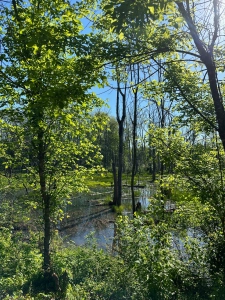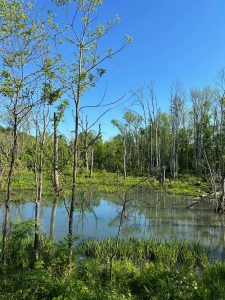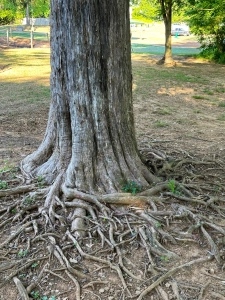Late Summer Revelation and Confusion (mine!) in a WNWR Bottomland Forest
I once again wandered the bottomland hardwood forest on the Wheeler National Wildlife Refuge, south of HGH Road near the Madison-Limestone County line on the morning of August 30, 2025. I wanted to reconnoiter the forest with my recently acquired 1937 aerial photo of the stand. I present my preliminary observations, reflections, photographs, and brief videos as I attempt to make sense of forest history and lay the groundwork for reevaluation during the dormant season.
My Hesitant Working Hypothesis
I was convinced that the bottomland hardwood forest that I explore 3-4 times per year, had regenerated naturally from abandoned farmland since the Corps of Engineers completed construction of Wheeler Dam in the mid-1930s. However, I often found trees far older and individuals decayed beyond what I would expect in a forest freshly regenerated just eight and one half decades ago. Chris Stuhlinger, another retired forester, and I are digging into the question of stand origin. The area I frequent lies south of the red line (HGH Road) and west of the vertical line (Madison County to the east; Limestone to the left) on this 1937 aerial photo. I’ve placed a short vertical ink mark where I routinely enter the forest, which is clearly extant 88 years ago, discounting my supposition of a forest sprouting in the mid-30s from abandoned agricultural land.
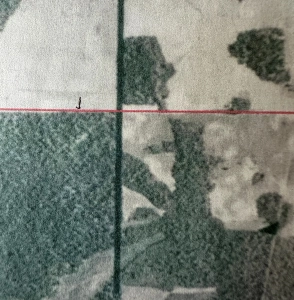
I determined the age of a large wind-blown white oak just a few hundred feet south of the forest beyond the edge of the photograph: August 2025 Post: https://stevejonesgbh.com/2025/08/27/huge-white-oak-blowdown-and-cleanup-at-wheeler-national-wildlife-refuge/. I determined its age at 129 years, making it 30-40 years old when acquired by the Corps/TVA. Chris and I will closely examine the stand during the 2025-26 dormant season in the absence of mosquitoes, ticks, chiggers, foliated poison ivy, and oppressive heat and humidity. 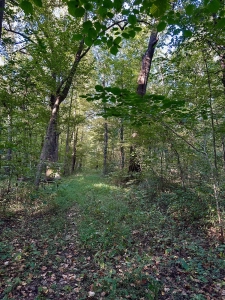
My Rationale for Accepting an Abandoned Farmland Origin
In the meantime, I reveal and reflect upon my recent saunter. Dominant yellow poplar and red oak trees could easily have been seedlings in the 1930s. These bottomland soils are extraordinarily fertile.
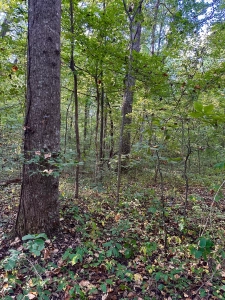
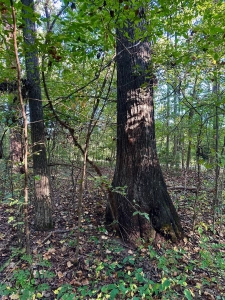
I recorded this 41-second video of a large black oak within a mixed stand that could have regenerated nearly nine decades ago.
The same is true of the forest housing this mid-story persimmon and a main canopy black oak.
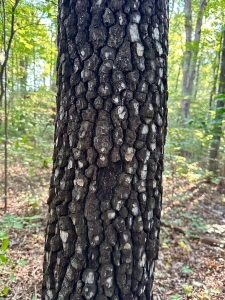
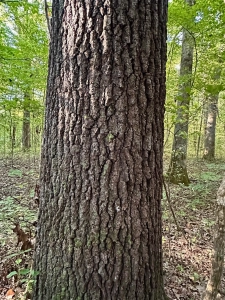
Here is my 35-second video of the persimmon and black oak.
I recorded this 38-second video of mixed main canopy and understory species.
Evidence Casting Doubt on My Abandoned Farmland Hypothesis
The very large dominant trees, including standing dead and nearby grotesqueley swollen and decayed individuals (the final tree in the short video) suggest an older stand. The massive green ash and shagbark hickory, both about two and one half feet in diameter, also hint at an age beyond 88 years.

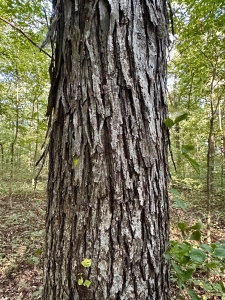
The same advanced age can be deduced by this 44.5-inch diameter chinquapin oak and the Carpinus carolinia (muscle wood tree) growing at its base.
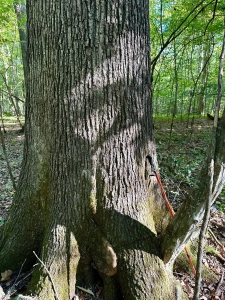
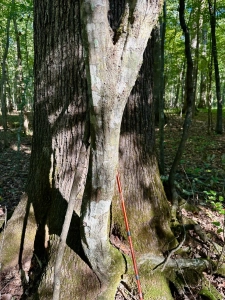
I also encountered this hollowed three-foot diameter oak barely clinging to life. Eighty-eight years is too abbreviated a period to reach this size and advanced decay.

I recorded this 47-second video highlighting the hollowed oak.
Likewise for this hopelessy decayed and swollen four-foot diameter oak.
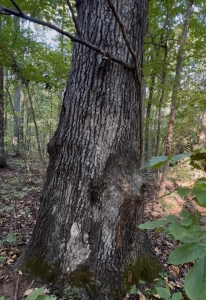
Here is my 47-second video of the individual.
This ancient oak stands along the old lane 150 feet from where I parked. Three and one-half feet in diameter, a windstorm took half of its canopy in the summer of 2020. Hidden from this view, the tree is hollow and open at the base, extending at least 30 feet to where the wind ripped half the crown away,
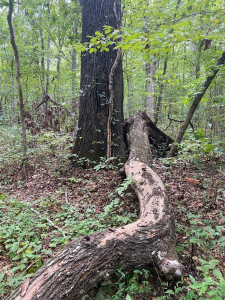
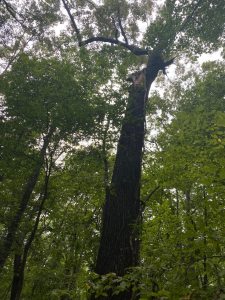
This violently uprooted three-foot diameter cherrybark oak toppled earlier this past summer.
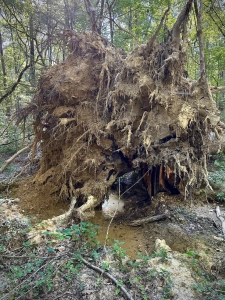
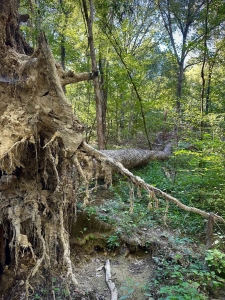
I recorded this 57-second video of the fallen giant.
Here’s another view of the oak.
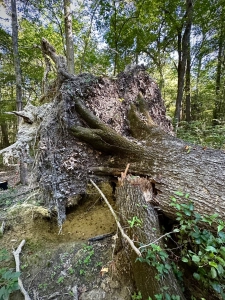
Nature has work to do, returning the tons of recently deceased wood to the soil. The carbon cycle is a BIG deal! Powder post beetles, wood-boring insects that deposit eggs just under the bark of dead or dying trees, are first in line to feast on the mighty oak’s cellulose and lignin. Drafting this narrative triggered an urge to ask many questions that at the moment I will not take time to answer. Questions such as, “How do the adult beetles know the oak is dead? Do live and dead wood smell different? Does living cambium emit sounds a beetle can hear? Does appearance change subtly with death? More obviously, does a horizontal trunk light up with a neon invitation to Come and Get it!?” Trust me, the beetles know! Within the two months since the tree fell, beetles have deposited eggs, the larvae have hatched, and begun voraciously consuming wood fiber. The beetles have already progressed from egg, to larva, to pupa, to adult. The emergent adult exit holes pepper with the fallen trunk with powdery frass.
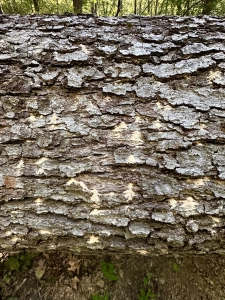

Death and life are inter-twined in the forest. The forest air is seasonally thick with fungal spores that have already entered every beetle exit hole. Infecting hyphae have found purchase within the oak. Mushrooms will appear on the oak trunk by the end of next summer. Five years hence, the bark will have sloughed and decay will have penetrated deeply into the wood. Nature abhors a vacuum!
Temporary Closure and a Revised Hypothesis
The 1937 aerial photo is clear. The area I felt had been in agriculture when engineers completed Wheeler Dam was, in fact, forested in 1937. I have a new hypothesis to test with Chris when we conduct our dormant season on-site forestry forensic sleuthing after New Year’s. The largest trees in the stand are overwhelmingly diseased and battered, suggesting that they may have been unmerchatable individuals when crews commercially harvested the forest that was present when the Corps/TVA aqcuired the land adjacent to the land destined for Lake Wheeler inundation. The resultant forest 88 years later is two-aged:
- The naturally regenerated 88 year old hardwood stand
- Scattered mostly unmerchantable individuals left by loggers
I look forward to learning as we go. As with most elements of Nature, the more I learn, the less I know. Every revelation uncovers new mystery. Such is the joy of curiosity.
Thoughts and Reflections
I offer these observations:
-
The noblest pleasure is the joy of understanding. (da Vinci)
- Every revelation uncovers new mystery. Such is the joy of curiosity. (Steve Jones)
-
Look deep into nature, and then you will understand everything better. (Einstein)
- As with most elements of Nature, the more I learn, the less I know. (Steve Jones)
Inhale and absorb Nature’s elixir. May Nature Inspire, Inform, and Reward you!
Note: Unless otherwise noted, all blog post images are created & photographed by Stephen B. Jones.
Please circulate images with photo credit: “©2025 Steve Jones, Great Blue Heron. All Rights Reserved.”
I am available for Nature-Inspired Speaking, Writing, and Consulting — contact me at steve.jones.0524@gmail.com
Subscribe to my free weekly photo essays (like this one) at: http://eepurl.com/cKLJdL
A reminder of my Personal and Professional Purpose, Passion, and Cause
If only more of us viewed our precious environment through the filters I employ. If only my mission and vision could be multiplied by untold orders of magnitude:
Mission: Employ writing and speaking to educate, inspire, and enable readers and listeners to understand, appreciate, and enjoy Nature… and accept and practice Earth Stewardship.
Vision:
- People of all ages will pay greater attention to and engage more regularly with Nature… and will accept and practice informed and responsible Earth Stewardship.
- They will see their relationship to our natural world with new eyes… and understand their Earth home more clearly.
Tagline/Motto: Steve (Great Blue Heron) encourages and seeks a better tomorrow through Nature-Inspired Living!
Steve’s Four Books
I wrote my books Nature Based Leadership (2016), Nature-Inspired Learning and Leading (2017), Weaned Seals and Snowy Summits: Stories of Passion for Place and Everyday Nature (2019; co-authored with Dr. Jennifer Wilhoit), and Dutton Land & Cattle: A Land Legacy Story (2025) to encourage all citizens to recognize and appreciate that every lesson for living, learning, serving, and leading is either written indelibly in or is powerfully inspired by Nature. All four of my books present compilations of personal experiences expressing my deep passion for Nature. All four books offer observations and reflections on my relationship with the natural world… and the broader implications for society. Order any from your local indie bookstore, or find them on IndieBound or other online sources such as Amazon and LifeRich.
I began writing books and Posts for several reasons:
- I love hiking and exploring Nature
- I see images I want to (and do) capture with my trusty iPhone camera
- I enjoy explaining those images — an educator at heart
- I don’t play golf!
- I do love writing — it’s the hobby I never needed when my career consumed me
- Judy suggested my writing is in large measure my legacy to our two kids, our five grandkids, and all the unborn generations beyond
- And finally, perhaps my books and Blogs could reach beyond family and touch a few other lives… sow some seeds for the future
